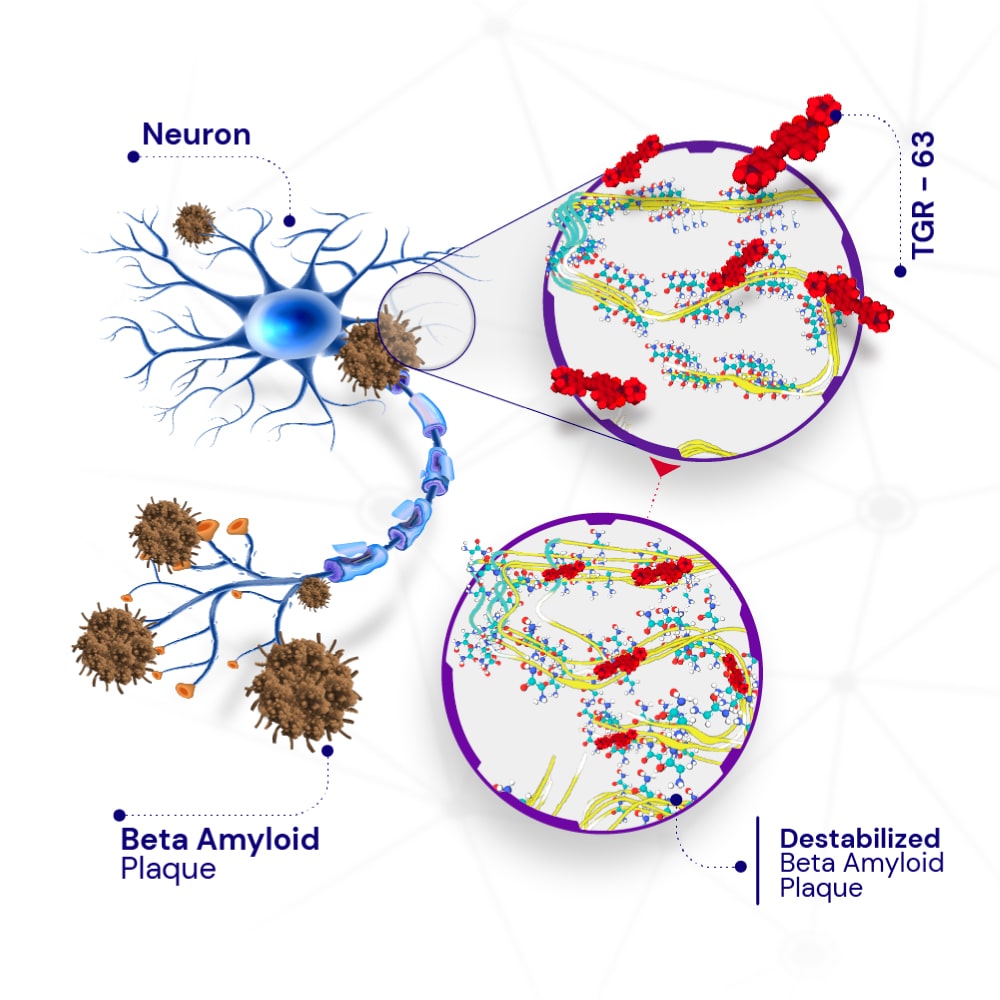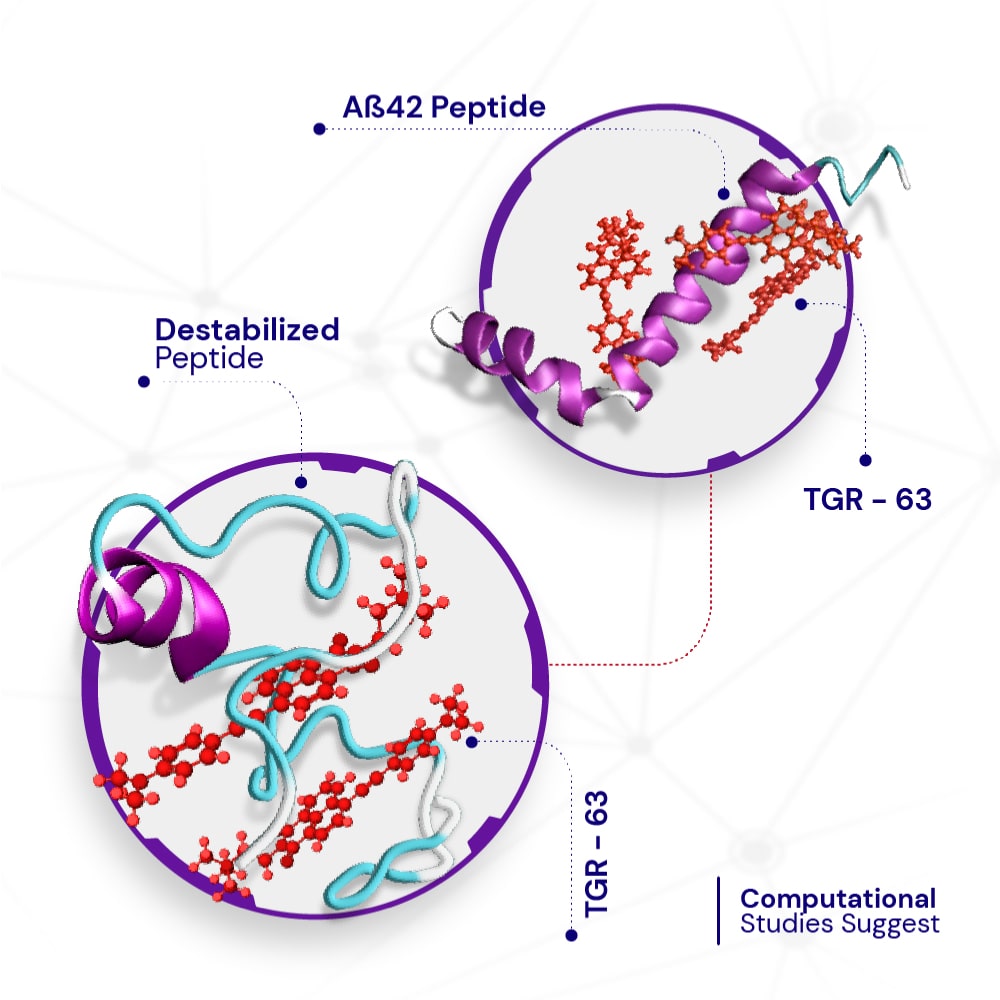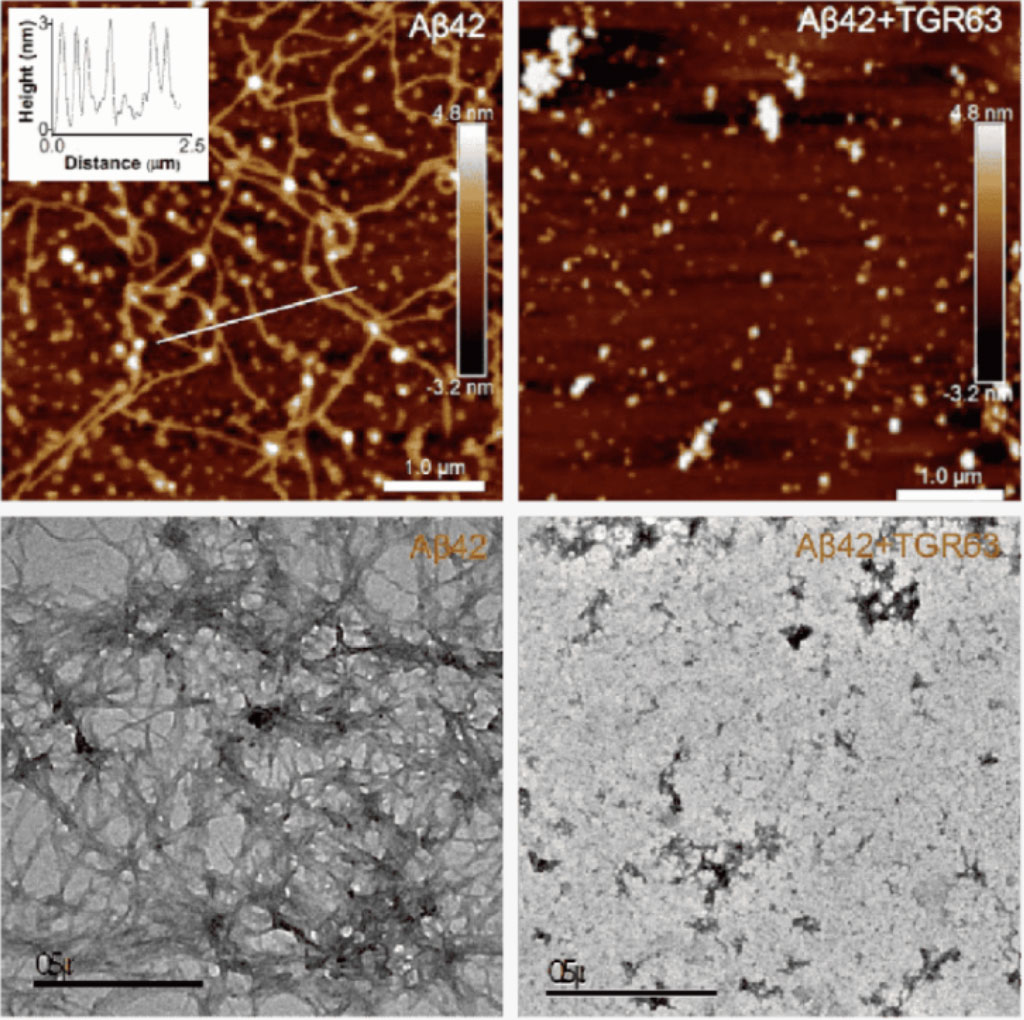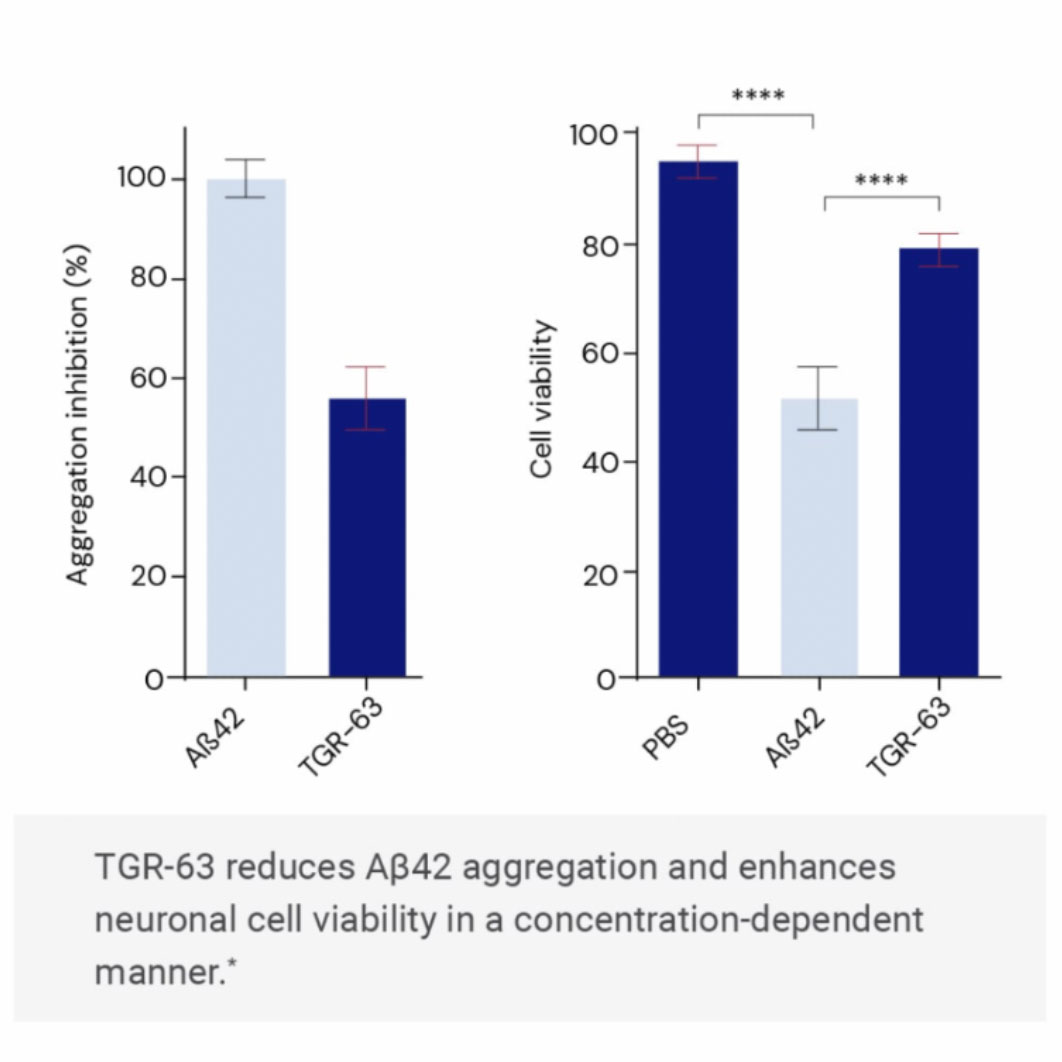TGR-63
A small molecule designed to break down plaque formation in the brain, exhibiting outstanding biocompatibility, the ability to breach the blood–brain barrier, and pre-clinical behavioral efficacy.*
Tracing the Origins: The Development of TGR-63 Compound
It was licensed from the Jawaharlal Nehru Centre for Advanced Scientific Research in India and developed by Prof. T Govindaraju, who designed several naphthalene monoimide compounds and compared their capacity to inhibit Aβ aggregation, their cytotoxicity, and their neuronal rescue capacity, in which TGR-63 excelled.
Introducing
TGR-63 A naphthalene monoimide compound



Pre-clinical Studies: Detailed Scientific Results



With Aβ deposits decreased by 78% in the cortex and 85% in the hippocampus.*
In the Novel Object Recognition test, mice treated with TGR-63 showed increased exploration of a new object over a familiar one, indicating enhanced learning capacity.*
During the Morris Water Maze test, mice treated with TGR-63 exhibited improved spatial memory, with decreased latency in finding the target compared to the untreated group.*
In the Open Field Test, the evaluation of mice’s movement through an open arena provided measures of the total distance traveled, time spent in the center versus the periphery, and rearing behavior, indicating an improved response to the unfamiliar environment by mice treated with TGR-63.*
